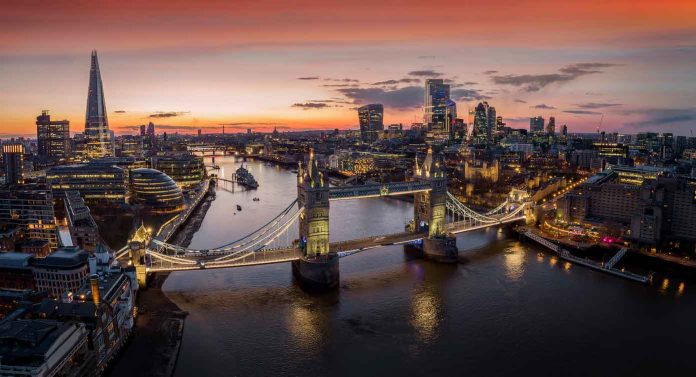A city’s built environment – the human-made surroundings that provide the setting for human activity – is an important factor for residents’ quality of life. London is currently seeing exciting changes, from the level individual buildings to the whole city, which promise to significantly improve the welfare of its inhabitants.
If a city stays at the forefront of innovation, it will attract big-ticket companies and start-ups. For example, when the Shard was built in London, it quickly became home to fashion unicorn MatchesFashion under its co-founder Tom Chapman and, more recently, HSBC has just signed a landmark deal to move into the Cheesegrater.
Falls in pollution
One of the big headline changes London is going through is the reduction in levels of air pollution. Between 2016 and 2020, the number of Londoners living in areas with illegally high levels of nitrogen dioxide, a dangerous but widespread pollutant, fell by 94%. This comes alongside reductions in other gases contributing to London’s air pollution, including carbon monoxide and dioxide.
This is a very significant development, as even as late as 2019 air pollution has been the cause of around 4,000 deaths per year in the city. Local and national government policy, most notably Ultra-Low Emission Zones (ULEZs), have helped solve this serious problem, but more progress needs to be made.
Development of the South & East
Since the Olympics ten years ago, the East and South East of London have been transformed. Developers have capitalised on the cheaper cost of land, particularly the many available brownfield sites, building modern blocks of high-value properties. Many deprived areas have been regenerated, bringing a whole host of benefits to their residents.
The development of these disadvantaged areas brings incremental improvements to general wellbeing. Public health is improved, as are community relations, public safety, and besides all this residents can be proud of where they live.
As areas continue to improve, the will attract more visitors to previously less attractive high streets and shopping centres, for example. Increased footfall will boost sales and in turn, existing businesses will benefit and new firms might be attracted to the area. This might even boost local jobs as increased economic activity creates demand for employment.
Social Welfare Initiatives
More and more thought is being given to the impact of new buildings, developments, and activities by owners, property managers and occupiers. Many developers now take time to consider and properly understand their properties’ social value as well as their potential to contribute towards a range of business concerns. This range is vast, from occupier and visitor satisfaction to increased footfall, from improved community relations to positive publicity.
The recent trends in social value initiatives have gone down two primary channels: sustainability and the introduction of the public realm into developments.
Sustainability has been a significant in the built environment for some time now, but the momentum is not going anywhere. Climate risks and carbon neutrality are now virtually necessary points of discussion for any new build in the capital. The momentum for this is not all from regulators either, as both developers and the target markets of the property have their own reasons to care. Green buildings account for a larger and larger share of projects each year, and this is expected to grow further in the coming years.
The public realm is all parts of the built environment where the public has free access. Many developments are now designed to be fully integrated with the surrounding urban area, rather than acting like islands with no social context. The form this takes can vary massively: office buildings may feature a café on the ground floor which anyone can have a coffee in, or hotels often have restaurants or even more surprising additions like museums which are open to the public, not just guests. Building in the capital is now done with a mind to how the space can serve multiple purposes, around the clock and the calendar.
Improvements in telecom networks
One of the big sources of progress for disadvantaged areas is enhanced telecom networks. Historic divides in the city between areas can certainly be partially attributed to the digital divide, and the need for increased telecoms infrastructure in deprived areas. Worse connections lead to lower productivity, skill shortages and worse access to opportunities.
The rollout of fibre optic broadband, and 5G networks across the city has helped narrow the divide and lift up those previously disadvantaged areas. The local administrations have installed street assets like lighting columns and bus stops which host a network of small mobile transmitters which will bring city-wide connectivity improvement and ready London for the future. Even public transport has seen massive progress in connectivity for users, a new high-capacity fibre optic network across the London tube network.


































